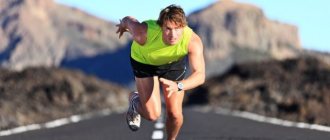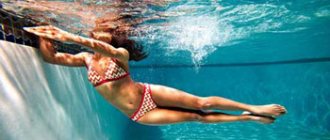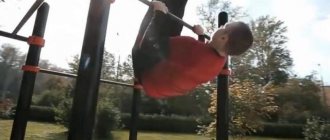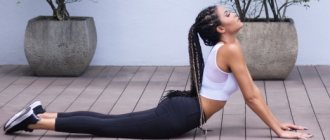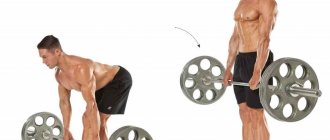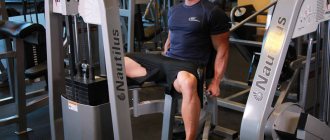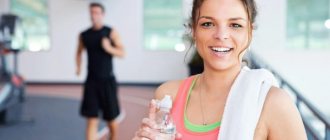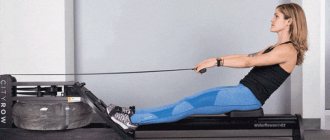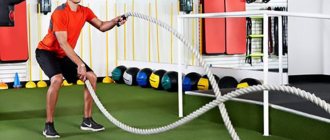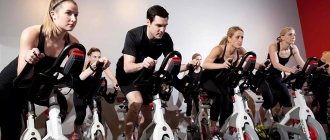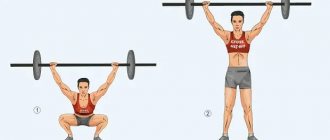© sank1980 — stock.adobe.com
Share:
Longitudinal split is an acrobatic, dance and gymnastic element in which one leg is in front of the body and the other behind it, both legs are straight at the knees, located perpendicular to the body or at an acute angle to it.
The ability to perform longitudinal splits shows others excellent flexibility and excellent physical fitness. In addition, movement has a good effect on your general condition. Next, we will tell you how you can do the longitudinal splits at home relatively quickly.
How is longitudinal twine useful and for whom is it contraindicated?
Benefits of longitudinal twine:
- improves mobility of the hip joints and sacrum;
- normalizes blood flow in the pelvis;
- improves the elasticity of the inguinal ligaments
- straightens the spine, aligns posture;
- prevents pathologies of the genitourinary system (according to experts, as it prevents congestion);
- is an excellent workout for the muscles of the inner thigh.
Movement is contraindicated when:
- hyperthermia;
- chronic joint diseases;
- recent fracture or injury;
- acute inflammations.
If you experience a buzzing in your ears or feel dizzy during exercise, you need to stop training. The best thing to do in this case is to lie down, relax, and drink plain water without gas. If such symptoms recur repeatedly, it is recommended to go to the hospital. Most likely, there are problems with the cardiovascular system.
Types of longitudinal twine
- Depending on which leg is in front and which is behind. It often happens that one option, for example, with the right leg in front and the left leg behind, is easier than the other. In this case, it is recommended to intensify training on the leg on which the splits are worse. It is important to train both types symmetrically.
- Depending on the place of execution: on the floor (classic version, on your back and on your hands) or in the air, standing in front of you and behind you, or with support (pylon, crossbar, yoga hammock).
© F8studio - stock.adobe.com. Classic version
© Artranq - stock.adobe.com. Option on the back
© master1305 - stock.adobe.com. Option on hand
© Andrey Burmakin — stock.adobe.com. Longitudinal split in jump
© Prostock-studio - stock.adobe.com. Splits standing in front of you
© Prostock-studio - stock.adobe.com. Splits standing behind you
© Parilov — stock.adobe.com. Twine with support on a hammock for yoga
Where to start training?
As we noted in the previous chapter, warming up is the first basic rule of flexibility training. Immediately before stretching, we recommend performing 1-2 exercises of your choice for 7-10 minutes:
- Jumping rope,
- Easy jumping in place
- Jogging on a treadmill,
- Walking on the Stepper simulator.
After your body has warmed up and your muscles have become more elastic, you can begin the main part of the lesson. In each position, perform 10-15 “swinging” movements, then hold for 30-40 seconds.
Lunge quadriceps stretch
Stand in a lunge, placing your back foot on the back surface (lacing). Keep your back straight, do not lean forward. From this position, press your pelvis forward and down until you feel a stretch in the front of your thigh on your back leg.
Quadriceps stretch while kneeling
Lying quadriceps stretch
Take a position lying on your stomach. Bend one leg at the knee using muscle force, then grab the foot with both hands and pull the heel towards the buttocks. Hold this position until you feel a stretch in the quadriceps of your bent leg.
Quadriceps stretch lying on the floor
Quadriceps stretch while sitting on your knees
Take a kneeling position with your feet on the back of your feet. Raise your body, bend as far back as possible without dropping your pelvis. Press your palms into your heels.
Quadriceps stretch while sitting on your knees
Incline Hamstring Stretch
Take a standing position with your feet together. Lean forward without bending your knees. Stay in this position until you feel stretched.
Forward Bend Hamstring Stretch
Standing hamstring stretch
Step one foot forward. The feet of both legs should be turned in one direction. Place the foot in front on the heel, pull the toe towards you. Bend towards your leg without bending your knee joints. Stay in this position.
Standing hamstring stretch
Stretching the thigh muscles while sitting on the floor
Sit on the floor, stretch one leg in front of you, bend the other and rest your foot on your thigh. Bend towards your extended leg, do not bend at the knee joint. Pull the sock towards you. Stay in this position.
Stretching the thigh muscles while sitting on the floor
Stretching the gluteal muscles while sitting
Sit on the floor, rest your palms on the floor behind you. Extend one leg forward and place the other across the opposite thigh. Bend your lower leg at the knee and pull it towards you. Hold in the maximum stretch position.
Stretching the gluteal muscles while sitting
Stretching the calf muscles and Achilles tendon
Step into a lunge position with your back heel off the floor. Through tension, stretching the calf muscles, try to push the heel down.
Stretching the calf muscles and Achilles tendon
Stretching the groin muscles while sitting
Sit on the floor, bend your knees so that your feet touch each other. Keep your back straight, try to spread your legs as wide as possible. Lean forward and lock in this position.
Stretching the groin and back muscles while sitting
Rules for performing longitudinal split exercises
Before you start doing exercises to stretch your muscles, you need to warm them up well. You cannot stretch without preliminary preparation. To do this, you can perform cardio exercises for about 15-20 minutes.
You should start stretching directly when you feel that your body is well warmed up. To do this, you need to complete the complex described above.
In order for classes to bring quick results, they must be carried out regularly. Doing exercises in the morning is quite difficult, but this way you can achieve better results. In the evening, training is easier, since the muscles are developed during the day. If you don’t train for a long time, it will immediately affect the condition of your muscles and ligaments, and you’ll have to start all over again.
If the room is not hot, then you need to exercise in closed clothes. Muscles quickly lose heat at low temperatures.
It is very important to monitor the sensations and signals of the body. Exercises shouldn't hurt. At first, we will tolerate discomfort, as the muscles stretch, that is, change their structure. However, the degree of discomfort should not be high; if pain occurs, you need to reduce the effort. The muscles should be pulled gradually, accustoming them to the new position.
The series of exercises should be carried out completely first on one side and then on the other. The body is symmetrical, and “one-sided” training will bring much less pronounced results.
© Drobot Dean - stock.adobe.com
Physiology of muscle stretching. Anatomy of stretch marks, muscles
First, I want to link to a very detailed, extremely interesting book based on the book “The Science of Flexibility” by Michael J. Alter.
The book itself can be downloaded, for example. To be honest, I haven’t had time to read the entire book yet, but even from its summary in the article you can see that the work is very fundamental. In general, there (in the article) it is written not only directly about the muscles, but also about the structure of tendons, connective tissue, blood vessels, nerves, and even about the influence of stress caused by stretching on the mental state and vice versa. For those who are too lazy to read everything, I will write down the most important/interesting points: - Safe muscle stretching must be done gradually (so that the muscle has time to lengthen by building up new segments).
—Strong muscles make stretching safer because they prevent overstretching. Of course, this is not a reason to turn off your head when studying. However, I can say from my own experience: strong muscles really stretch better. When I tried to stretch a long time ago with a flaccid body, I very quickly developed a sprain. And vice versa, having developed decent physical strength, in five months of targeted stretching exercises for the splits, firstly, I did not harm myself, and secondly, I stretched my muscles very quickly (I was able to do the first split from scratch after two months of regular training ).
— Muscle flexibility mainly depends on the stretching of connective tissue, in which collagen fibers, in particular, play a special role. As it turned out, collagen (which I started drinking for my joints) turned out to be much more useful than I initially expected. :o) In addition, physical activity reduces the number of cross-links of collagen, increasing the elasticity of the tissue - again about the benefits of a trained body in general.
— Increasing flexibility lies in the plasticity of the fabric, i.e. its ability to secure a new shape, and not in elasticity - the ability to stretch, but also to return to its original shape. Plasticity depends more on collagen.
— The resistance of various types of connective tissue to stretching is: ligaments (connect bones to each other) - 47%, fascia (“shell” of muscles) - 41%, tendons (connect muscles and bones) - 10%. They consist mainly of collagen.
— Stretching does not lengthen the tendons or make them less rigid, but increases their tolerance to stretching. Those. ability to withstand stronger tensile forces without injury.
— The process of retraining a movement takes twice as long as initial training! Conclusion: it's better to do everything right from the very beginning. ;O)
— Written about the lack of passive stretching (with the help of a partner). That it is too painful and does not help maintain flexibility. Personally, I don't agree. If the partner is adequate - he carefully makes efforts, listens to the other, does not force anything, then such stretching is extremely effective. I was able to do the splits so quickly only thanks to the help of my partner (coach).
— Arguments are given for the particular benefits of active (independent) stretching. And it requires strong antagonist muscles, i.e. again, a strong, trained body.
— The most optimal frequency of classes: 2-4 times a week. The amount depends on the stiffness of the connective tissue, the stiffer the more.
In any case, I highly recommend reading the book itself - it’s brilliant, just a ton of extremely detailed, fascinating information.
